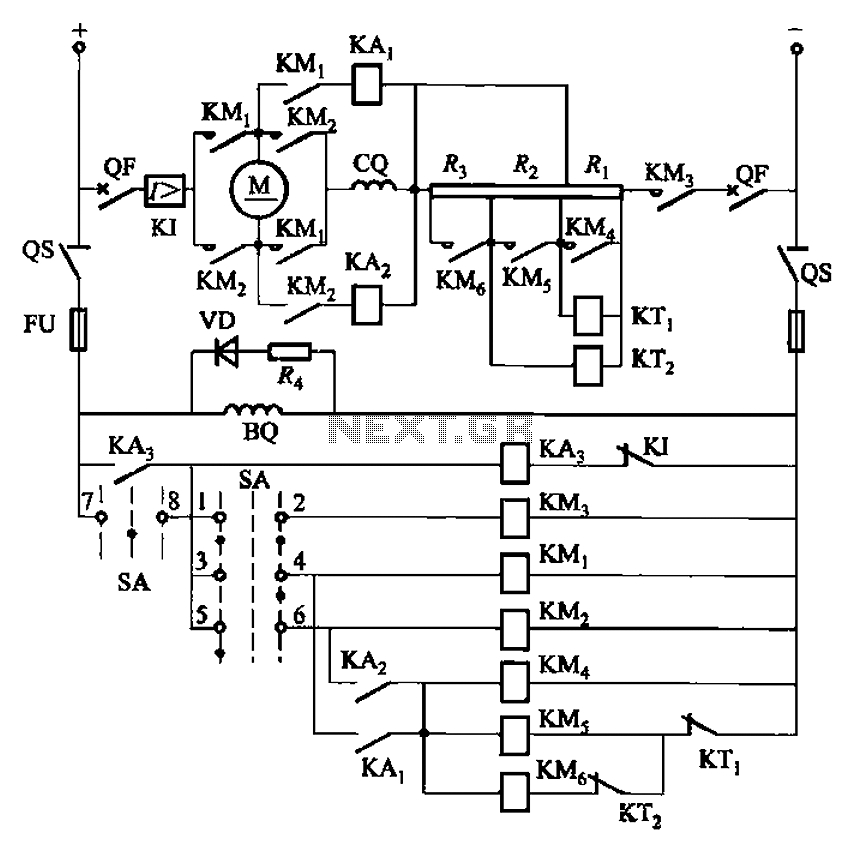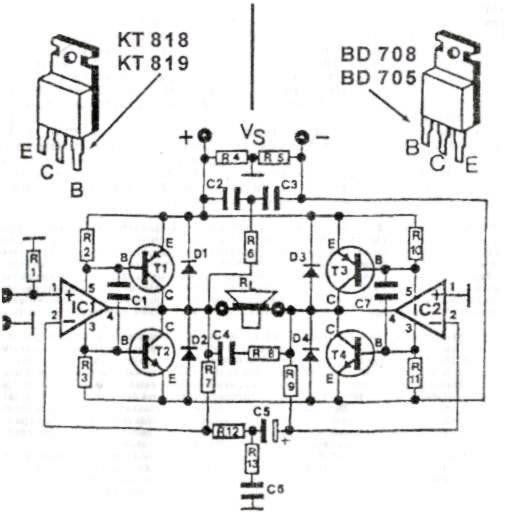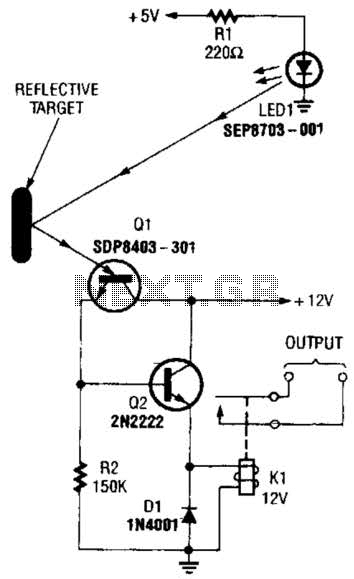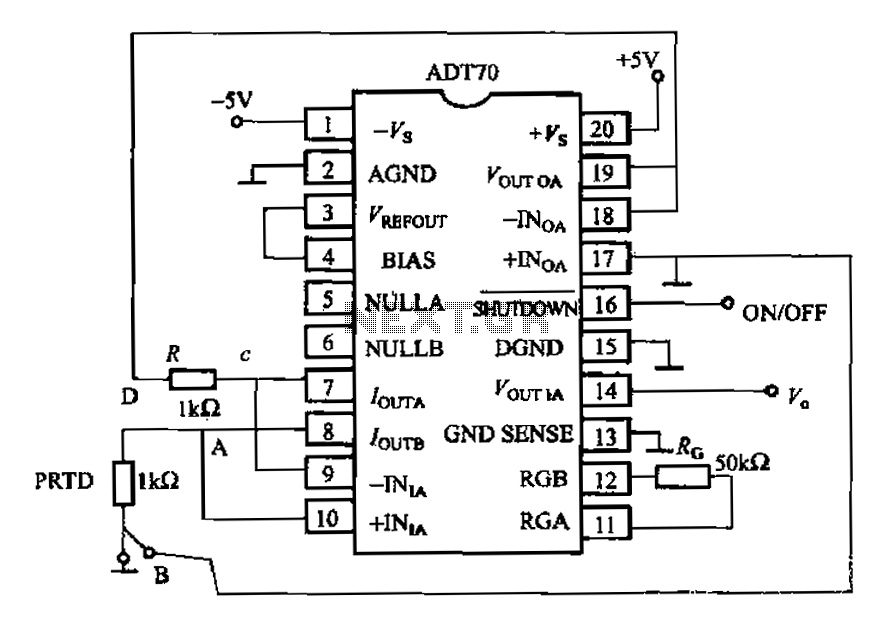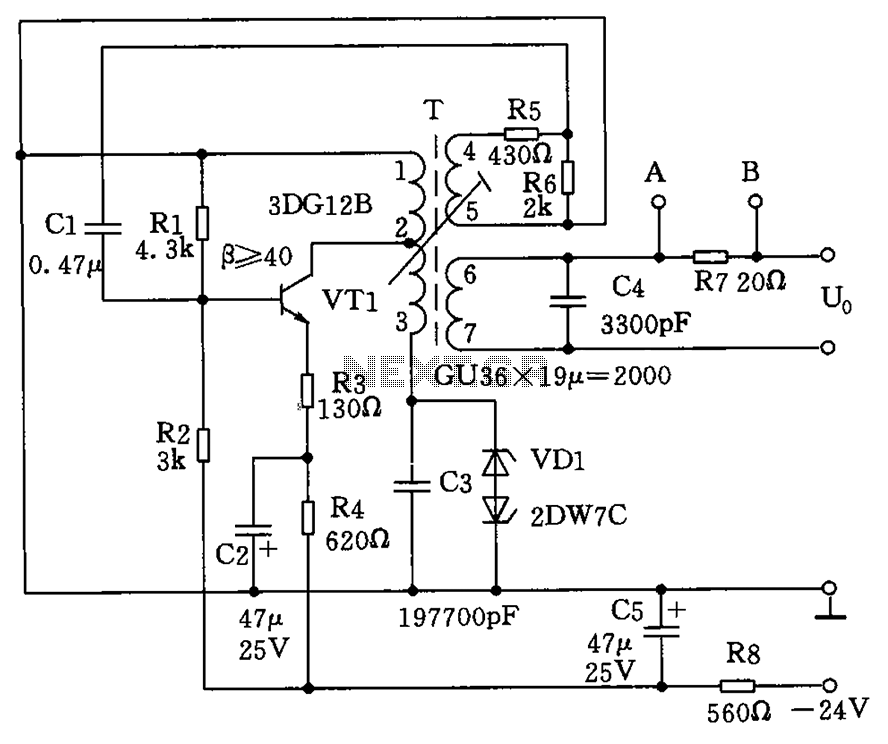
Unsteady programmable circuit diagram
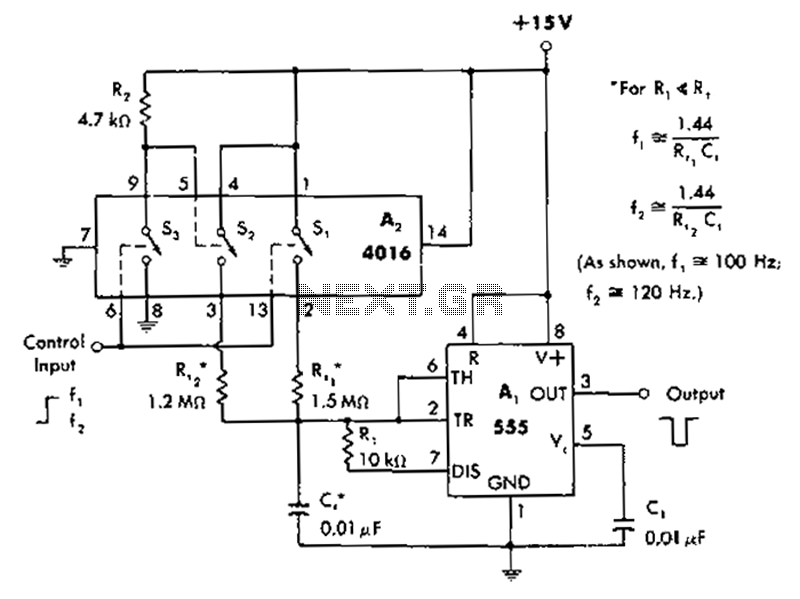
A circuit diagram controls the timing based on the input line state. When the input line is high, the 4016 CMOS analog switches select the timing of a 1.5 megohm resistor (Rt1) to produce negative output pulses at a frequency of 100 Hz. Conversely, when the input is low, CMOS switch S2 opens and selects a 1.2 megohm resistor (Rt2) for generating output at a frequency of 120 Hz.
The described circuit utilizes a 4016 CMOS analog switch, which is a quad analog switch that allows for the selection of different resistive timing components based on the state of an input control signal. The circuit operates by routing the timing resistor through the analog switch to produce desired output frequencies.
When the input signal is high, the switch connects to a 1.5 megohm resistor (Rt1). This resistor, in conjunction with the associated capacitive components, determines the timing characteristics that yield a negative output pulse at a frequency of 100 Hz. The negative pulse indicates that the output signal transitions from a high state to a low state, producing a square wave with a specific frequency determined by the RC time constant.
In the alternate state, when the input signal is low, CMOS switch S2 opens, and the circuit selects a 1.2 megohm resistor (Rt2). This configuration alters the RC timing characteristics, resulting in an output frequency of 120 Hz. The choice of resistors directly affects the frequency of the output signal, illustrating the flexibility and utility of the analog switch in adapting the circuit's response based on input conditions.
The output pulses generated can be used for various applications such as timing circuits, frequency modulation, or as a clock signal for digital circuits. The precise control over the output frequency via resistor selection allows for fine-tuning in applications requiring specific timing intervals. The design ensures low power consumption typical of CMOS technology while providing reliable switching characteristics.A circuit diagram of the control when the input line is high time, 4016CMOS analog switches will choose the timing of 1.5 megohm resistor Rt1, to produce a negative 100Hz to ou tput pulses. When the input is low, CMOS switch S2 opens, select the 1.2 megohm resistor Rt2 timing to generate the output of 120Hz.
The described circuit utilizes a 4016 CMOS analog switch, which is a quad analog switch that allows for the selection of different resistive timing components based on the state of an input control signal. The circuit operates by routing the timing resistor through the analog switch to produce desired output frequencies.
When the input signal is high, the switch connects to a 1.5 megohm resistor (Rt1). This resistor, in conjunction with the associated capacitive components, determines the timing characteristics that yield a negative output pulse at a frequency of 100 Hz. The negative pulse indicates that the output signal transitions from a high state to a low state, producing a square wave with a specific frequency determined by the RC time constant.
In the alternate state, when the input signal is low, CMOS switch S2 opens, and the circuit selects a 1.2 megohm resistor (Rt2). This configuration alters the RC timing characteristics, resulting in an output frequency of 120 Hz. The choice of resistors directly affects the frequency of the output signal, illustrating the flexibility and utility of the analog switch in adapting the circuit's response based on input conditions.
The output pulses generated can be used for various applications such as timing circuits, frequency modulation, or as a clock signal for digital circuits. The precise control over the output frequency via resistor selection allows for fine-tuning in applications requiring specific timing intervals. The design ensures low power consumption typical of CMOS technology while providing reliable switching characteristics.A circuit diagram of the control when the input line is high time, 4016CMOS analog switches will choose the timing of 1.5 megohm resistor Rt1, to produce a negative 100Hz to ou tput pulses. When the input is low, CMOS switch S2 opens, select the 1.2 megohm resistor Rt2 timing to generate the output of 120Hz.
